In observance of Martin Luther King Jr. day, we’d like to take a look at the civil rights leader’s life through photographs. The pictures of Martin Luther King Jr. below provide a fascinating glimpse into his incredible life.
Martin Luther King Jr.’s Early Life
Martin Luther King Jr. was born in Atlanta, Georgia, in 1929. He was the second of three children to Reverend Martin Luther King Sr and Alberta King. While King would not become a public figure until his mid-twenties, earlier incidents in his childhood hinted at the man he would become.
At the age of 15, King won a statewide public speaking contest in Dublin, Georgia. In his speech, he spoke about how the treatment of Black Americans was inconsistent with the Constitution. Travelling home afterwards by bus, King was verbally abused and forced to give up his seat for a white man. Years later, he wrote “that night will never leave my memory. It was the angriest I have ever been in my life.”
After high school, King followed in his father’s footsteps and entered the Baptist ministry at age 18. He also continued his education, completing two degrees and eventually receiving his PhD from Boston University. While completing his doctorate, King met his future wife, Coretta Scott, who also had a history with activism.
In 1954, King became a pastor of the Dexter Avenue Baptist Church in Montgomery, Alabama.
1955 – Montgomery Bus Boycott
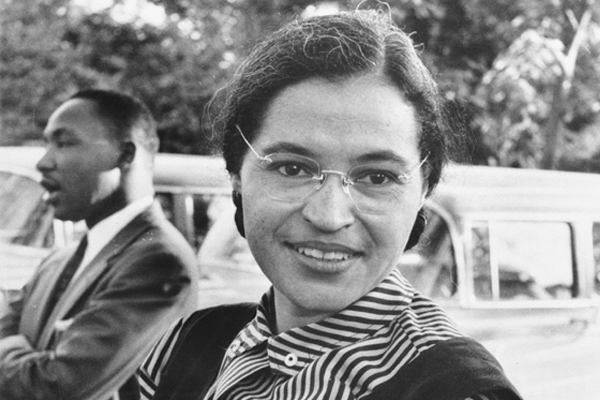
On December 1st, 1955, a 42 year old seamstress named Rosa Parks boarded a bus in Montgomery, Alabama. Her now famous act of civil disobedience – refusing to give up her seat for a white passenger – led to the Montgomery Bus Boycott, and eventually helped to end racial segregation on buses across the US.
At the time, over 70% of Montgomery’s bus patrons were Black, and the first day of the boycott was 90% effective. That day, leaders of the Black community gathered together and formed the Montgomery Improvement Association (MIA). The pastor of Dexter Avenue Baptist Church, Dr. Martin Luther King Jr., was elected president of the MIA.
Under King’s leadership, the boycott continued, causing economic strain on the city. Car pools were organized to help boycotters travel to and from work, while many Black cab drivers also offered heavily discounted fares. Opposition to the boycott was swift and violent. Boycotters were regularly attacked, and the homes of King and other leaders were firebombed.
1956 – The End of Bus Segregation in Montgomery, Alabama
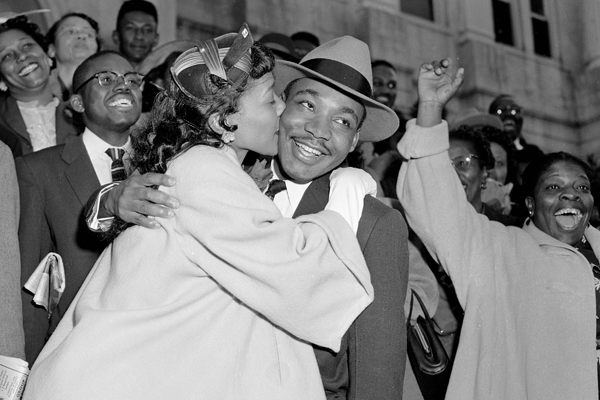
King and 89 others were eventually charged with violating a statute that outlawed boycotts against businesses. King was found guilty and fined $500, although he appealed the verdict. The sentence was changed to 386 days of jail time, however, King only spent two weeks in jail.
Outside the courthouse, he was greeted by his wife and a cheerful crowd of supporters. In response to the verdict, King is quoted as saying “This will not mar or diminish in any way my interest in the protest. We will continue to protest in the same spirit of nonviolence and passive resistance, using the weapon of love.”
The decision to indict King and the others ultimately backfired. It gave the boycott national attention, and King became a popular public figure. King continued to organize nonviolent protests, now on a much larger scale. Drawing inspiration from Gandhi, King wrote in 1959 that he was the “guiding light of our technique of nonviolent social change.”
A federal lawsuit was eventually filed by Fred Gray, the MIA’s chief counsel. Browder v. Gayle went before the District Court, where it was ruled that bus segregation is unconstitutional under the 14th Amendment. The decision was subsequently affirmed by the Supreme Court. Montgomery’s buses were officially integrated on December 21, 1956. Exactly 386 days after Parks refused to give up her seat.
1963 – March on Washington
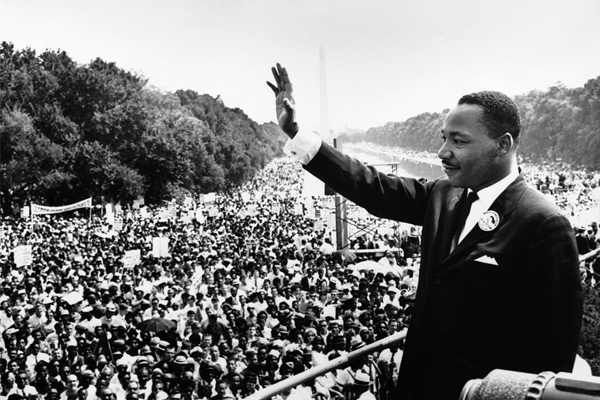
Following the Browder v Gayle ruling, Dr. King’s public profile continued to grow. In 1957, he helped found the Southern Christian Leadership Conference (SCLC). The organization was established to organize more nonviolent, civil rights protests across the country.
King’s momentum attracted a lot of negative attention. In 1958, he was stabbed while signing copies of his book, Stride Towards Freedom. In 1960, he was indicted on two counts of felony perjury for allegedly signing fraudulent tax returns. King was later acquitted by an all-white jury.
By 1963, King was being extensively surveilled by the FBI. This year, he also helped organize the March on Washington. Approximately 250,000 people gathered in front of the Lincoln Memorial to advocate for the rights of Black Americans. Speaking to the crowd, King delivered his most famous speech. You can read or listen to the entire 17-minute ‘I Have a Dream’ speech here.
1964 – Meeting with Malcolm X
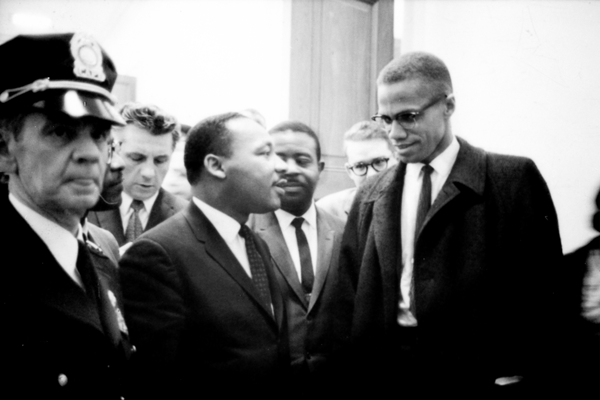
In March 1964, Dr. King met Malcolm X outside of a news conference on Capitol Hill. Like King, Malcolm X had become a prominent civil rights activist in the last 10 years. The men were often depicted as adversaries with differing visions for the civil rights movement. However, there is little evidence to suggest there was animosity between them. On the contrary, their first and only meeting was as cordial as it was brief.
More recent analysis of both leaders beliefs suggests they had moved towards each other by the time of their deaths. Tragically, both men were assassinated before they could meet again. Speculation continues about what both men could have achieved – separately and together – had they lived longer.
1964 – The Civil Rights Act of 1964
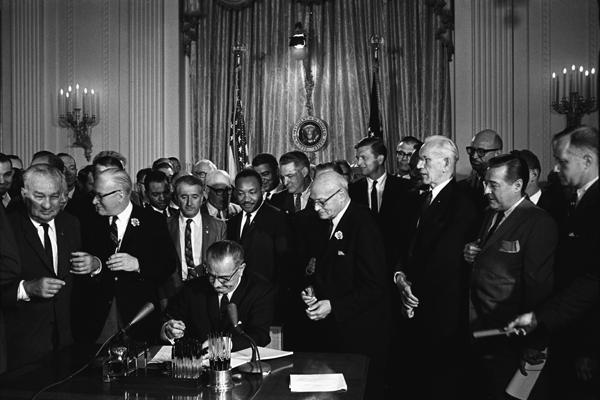
Following the March on Washington in August of 1963, Dr. King and other civil rights leaders met with President John F. Kennedy and Vice President Lyndon B. Johnson. President Kennedy had previously proposed legislation that would strengthen civil rights and voting rights. However, it was defeated in the senate.
Following President Kennedy’s assassination, President Johnson resurrected the legislation. It was eventually signed into law on July 2, 1964. The Civil Rights Act of 1964 remains the nation’s “benchmark civil rights legislation”. It “prohibits discrimination on the basis of race, color, religion, sex or national origin.” Additionally, it “strengthened the enforcement of voting rights and the desegregation of schools.”
Dr. King was present at the signing of the bill, considered a significant culmination of his work over the previous 10 years. In October 1964, King was awarded the Nobel Peace Prize for his “non-violent struggle for civil rights for the Afro-American population.”
2011 – Martin Luther King Jr. Memorial Dedication
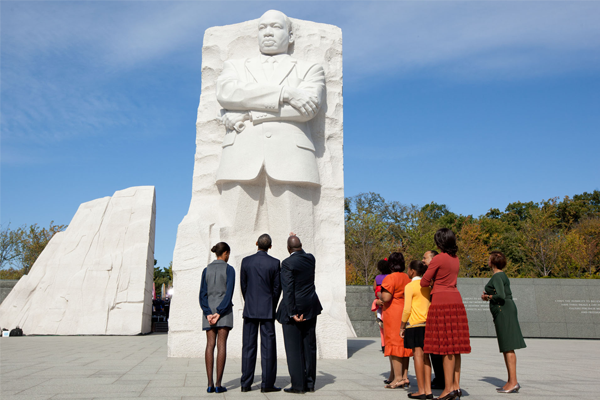
Dr. Martin Luther King Jr. was assassinated on March 29, 1968, at the age of 39. However, his legacy lives on. Coretta Scott King and other Black leaders continued to grow the movement after Dr. King’s death.
In August 2011, a 4-acre memorial dedicated to Dr. King opened to the public. The memorial features The Stone of Hope, a large granite statue of the Nobel laureate.
In October 2011, President Barack Obama attended the memorial dedication. Speaking in front of the monument, the President said, “As tough as times may be, I know we will overcome… I know this because of the man towering over us. I know this because all he and his generation endured – we are here today in a country that dedicated a monument to that legacy.”
2021 – Martin Luther King Jr. Day
The pictures of Martin Luther King Jr. above tell a powerful story. However, Dr. King’s dream has not yet been fully realized. The New York Times estimates that half a million people joined Black Lives Matter protests across the US on a single day in June of last year. Additionally, people of color are at increased risk of getting sick and dying from COVID-19 as a result of systemic health and social inequities.
The pictures of Martin Luther King Jr. above remind us that the quest for racial justice has been long and painful. However, through love, hard work, and determination, progress is possible.
“We must keep going. If you can’t fly, run, if you can’t run, walk. If you can’t walk, crawl, but by all means, keep moving.” Martin Luther King Jr.








Well done Brendan, well done.